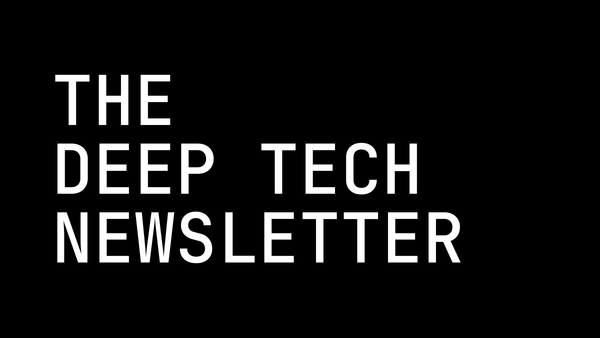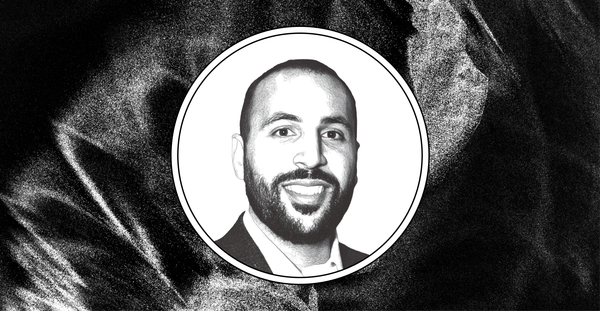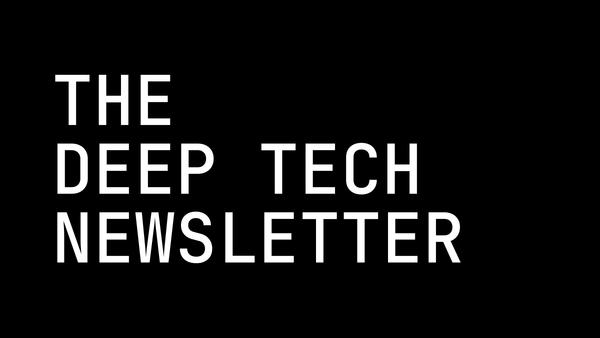Industrial Scale Microbiome Mining with Biosortia’s Ross Youngs
Ross Youngs is the founder and CEO of Biosortia, the only company practicing Microbiome Mining.
Ross Youngs is the founder and CEO of Biosortia, the only company practicing Microbiome Mining.

What led you to found Biosortia?
From the age of 16 through college, I helped my dad install medical imaging equipment which gave me a lot of hands-on engineering exposure without taking engineering classes. When I went to the Florida Institute of Technology, I earned a 2-year degree in environmental science and then pivoted to industrial engineering at Purdue University. In environmental science, the focus is on conserving nature’s resources, while industrial engineering emphasizes the efficient utilization of industrial resources; I’ve always been fascinated by resources and how they are meant to be used as efficiently and effectively as possible. This overarching principle has shaped my perspective, leading me to develop a philosophy centered around making things better, faster, cheaper, and differentiated.
When I started my first company, it involved efficiently using plastic so it could be reduced drastically in packaging – for context, our work saw a 93% reduction in the plastic content of the packaging. From there, I started looking at bioplastics and saw how algae could be utilized as a bioplastics source. The biggest barrier for algae was getting a very small amount of biomass out of the water efficiently. I tackled that efficiency challenge and ended up coming up with a brand new, patented technology that reduced the cost of getting a ton of algae out of the water from approximately $3,500 a ton down to $1.98 per ton.
Since we were processing microbial biomass so rapidly, we realized we had a key to a major issue in drug, agrichemical, cosmetic, and life science discovery. The key was not growing the microbes as they have been traditionally in a lab, but rather going into nature and collecting microbes in consortia – thus the name Biosortia. Put differently, a consortium of microorganisms is known as a microbiome, and now we can obtain quality, natural microbiomes at scale. Interestingly, while 50% of all drugs on the shelf today have either directly or indirectly originated from microbes grown in laboratories, you can only cultivate about 1% of the microbes on the planet in the lab. If 1% of the microbes gave us 50% of the drugs, imagine the potential discoveries that could emerge from accessing 100% of the microbes. We realized we had a breakthrough.
How does the microbiome mining process work?
All water and wastewater systems are designed to produce clean water and not recover the materials inside the water. If a person does try to recover the materials in water, typically 20,000 grams of water will only provide one gram of biomass. Traditional technologies push that water through a membrane with pressure resulting in the membrane quickly clogging or fouling so other materials will get through. Another problem is that microbes can change their metabolic pathways in as little as 15 minutes. They are fragile and will change when taken out of their natural habitat. Therefore, the method for capturing microbes from nature needs to be gentle and quick.
Our technology processes 2 million liters in a day without clogging a filter. We pull microbes out of native habitats and in two minutes and 14 seconds, we start preservation without harming the microbiome. The reason this is valuable is because our gut microbiome is heavily environmentally sourced, meaning a lot of the microbes that live inside us also live elsewhere. Furthermore, the Tara Ocean project found that our gut microbiome and the aquatic microbiome overlap by 73% in genes and metabolic pathways. This means a lot of the hidden chemistry of our gut microbiomes can be found through natural aquatic microbiomes.
What is the status quo today?
Why are revolutionary processes slow for acceptance? The status quo today is plagued by the innovator’s dilemma – when you have an entrenched industry or company, everyone is focused on what they do best. For example, in genomics, a person with a PhD and numerous publications in the field may land a job in industry or academia, such as running a drug discovery operation in a major pharmaceutical company. These experts often struggle to open their mindsets and look at possibilities completely outside of what they’ve built their entire careers on.
Arguably the biggest breakthroughs are outside the thought leadership of their time. From ChatGPT to the COVID-19 vaccine, almost every major breakthrough in the sciences came from outside thought. Although we may not earn the Nobel Peace Prize like the enablers of the COVID-19 mRNA vaccine, we will have a phenomenal impact on discovery across all of life sciences. Scientific papers prove that microbes are a wealth of knowledge that humanity hasn’t tapped into. To put it into perspective, we have more than 100,000 drug-like small molecules made by our microbiome which impact every aspect of our health, from inflammation to cancer to heart disease. However, the scientific community has no idea what these microbes are and the important function their chemistry provides. At Biosortia, we know exactly how we can uncover the majority of these molecules.
There are many applications for your technology, is there a specific application you are targeting?
The market drives our focus. In one recovery of a single natural microbiome, we found 73,000 unknown novel small molecules that biology uses in cellular signaling pathways. The Encyclopedia of Natural Products lists approximately 36,000 known small molecules from microbes, which is where 50% of our drugs originate. If we were able to recover 73,000 novel small molecules in just one instance, the potential impact would be immense.
Typically, a small molecule discovery program in any research lab worldwide might start with 100 milliliters. We begin with a quantity 200 million times larger. If you’re looking for a molecule present at a concentration of one part per billion or trillion, you’re unlikely to find it in just 100 milliliters – so if an estimated 100,000 unknown molecules exist in the human body, it takes to scale to uncover them. Nobody would attempt to mine lithium with a tin cup, so why are we taking that approach with microbes? Nature is the richest place to search for billion-dollar molecules, and no one has ever done it before because there were barriers. Biosortia has identified and overcome every single barrier.
What are the regulatory challenges in this industry, and what kind of policies might support or inhibit your ability to grow?
I am not overly concerned about being inhibited from doing what we need to do, as we could operate on private or public property. If we had policy support, we could solve many issues in the future, like the recent red tide in Florida. A red tide is a destructive outcropping of pollution or eutrophic waters that creates a growth of brevetoxins. Karenia brevis, the specific brevetoxin, creates a toxin that destroys fisheries and recently caused $8 billion in damages to businesses. Since Karenia brevis is also aerosolized, the health effects on the people in the area may not be known for years.
In this case, Biosortia can suggest a solution to policymakers. Our technology will understand the chemistry of the microbiome before, during, and after a bloom, potentially even uncovering inhibiting opportunities that could be deployed to stop a red tide in its tracks. All toxic algae create toxins to gain an advantage for growth and prosperity by inhibiting others. If we’re going to solve red tides, harmful algal blooms, and other things such as coral bleaching, we need to delve deep into the chemistry of the microbiome which can only be achieved through industrial-scale microbiome mining.
Using another example, let’s consider for a moment that the warming of water may not directly cause coral bleaching, but rather create molecules that become disastrous to the species involved. Since we don’t know the chemistry behind what’s happening, we often assume it’s solely due to the heat itself. However, in chemical reactions, heat acts as a catalyst, and anyone versed in chemistry understands that precise formulas must be followed to obtain desired results. When you heat up the water by just two degrees, no one truly comprehends the impact on the underlying chemistry. This is where industrial-scale microbiome mining becomes crucial. We need to unveil that hidden chemistry to grasp the full picture, enabling us to better control diseases and environmental issues.
What is the next step for Biosortia?
The next step for Biosortia is to actively seek public or private funding from individuals or institutions. We are not yet targeting pharmaceutical companies as they will likely follow once we demonstrate success. Initially, the core technology we invented was based on the physics principles of adhesion and cohesion for separating microscopic solids from dilute solutions. This unique approach secured us $6.3 million in funding from the U.S. Department of Energy to advance the technology further. We also received funding from DARPA and the U.S. Air Force, though focused on biofuel applications. While that funding helped create the technology, we have now driven it to a scale capacity ready for execution.
Pursuing this knowledge is of utmost importance and at Biosortia we possess the technology to make it a reality. I’m an engineer, not a dreamer. Every endeavor I’ve undertaken was because I could visualize it working and the pathway to achieve it. This doesn’t mean I’m brilliant by the way, it’s just such an obvious opportunity that if left untapped, someone else will seize it. Years ago, we didn’t comprehend the significance of microbiomes – our focus was solely on eradicating microbes. Now, we know that we haven’t been able to harness the wealth of critically hidden information within our reach. Microbiome mining has the potential to revolutionize life sciences, but more awareness needs to be raised.
HAUS specializes in public relations and creative services for deep tech startups.




